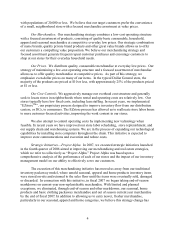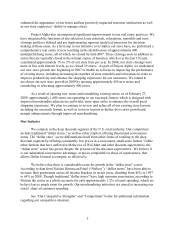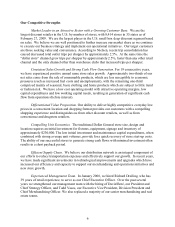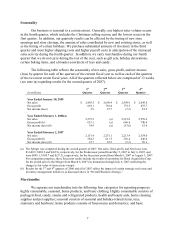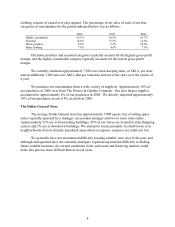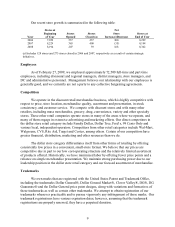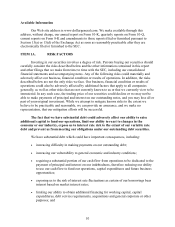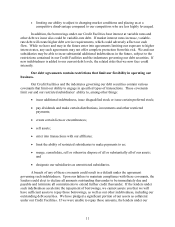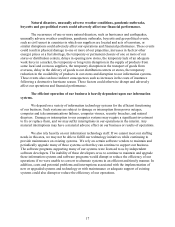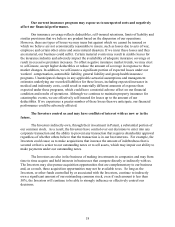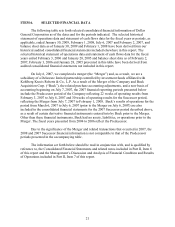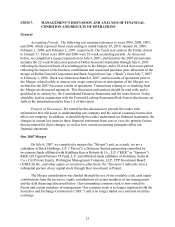Dollar General 2008 Annual Report Download - page 16
Download and view the complete annual report
Please find page 16 of the 2008 Dollar General annual report below. You can navigate through the pages in the report by either clicking on the pages listed below, or by using the keyword search tool below to find specific information within the annual report.14
may require the write off and disposal of existing product inventory, resulting in significant
adverse financial impact to the Company. Untimely compliance or noncompliance with
applicable regulations or untimely or incomplete execution of a required product recall can result
in the imposition of penalties, including loss of licenses or significant fines or monetary
penalties, in addition to reputational damage.
Litigation may adversely affect our business, financial condition and results of
operations.
Our business is subject to the risk of litigation by employees, consumers, suppliers,
competitors, shareholders, government agencies, or others through private actions, class actions,
administrative proceedings, regulatory actions or other litigation. The number of employment-
related class actions filed each year has continued to increase, and recent changes in Federal law
may cause claims to rise even more. The outcome of litigation, particularly class action lawsuits,
regulatory actions and intellectual property claims, is difficult to assess or quantify. Plaintiffs in
these types of lawsuits may seek recovery of very large or indeterminate amounts, and the
magnitude of the potential loss relating to these lawsuits may remain unknown for substantial
periods of time. In addition, certain of these lawsuits, if decided adversely to us or settled by us,
may result in liability material to our financial statements as a whole or may negatively affect our
operating results if changes to our business operation are required. The cost to defend future
litigation may be significant. There also may be adverse publicity associated with litigation that
could negatively affect customer perception of our business, regardless of whether the
allegations are valid or whether we are ultimately found liable. As a result, litigation may
adversely affect our business, financial condition and results of operations. See the disclosure
under the heading “Legal Proceedings” in Note 8 to the Consolidated Financial Statements
herein for further details regarding certain of these pending matters.
Failure to attract and retain qualified employees while controlling labor costs, as
well as other labor issues, could adversely affect our financial performance.
Our future growth and performance depends on our ability to attract, retain and motivate
qualified employees, many of whom are in positions with historically high rates of turnover. Our
ability to meet our labor needs, while controlling our labor costs, is subject to many external
factors, including the competition for and availability of qualified personnel in a given market,
unemployment levels within those markets, prevailing wage rates, minimum wage laws, health
and other insurance costs and changes in employment and labor legislation (including changes in
the process for our employees to join a union) or other workplace regulation (including changes
in entitlement programs such as health insurance and paid leave programs). To the extent a
significant portion of our employee base unionizes, or attempts to unionize, our labor costs could
increase. Our ability to pass along labor costs is constrained.
Also, our stores are decentralized and are managed through a network of geographically
dispersed management personnel. Our inability to effectively and efficiently operate our stores,
including the ability to control losses resulting from inventory and cash shrinkage, may
negatively affect our sales and/or operating margins.


